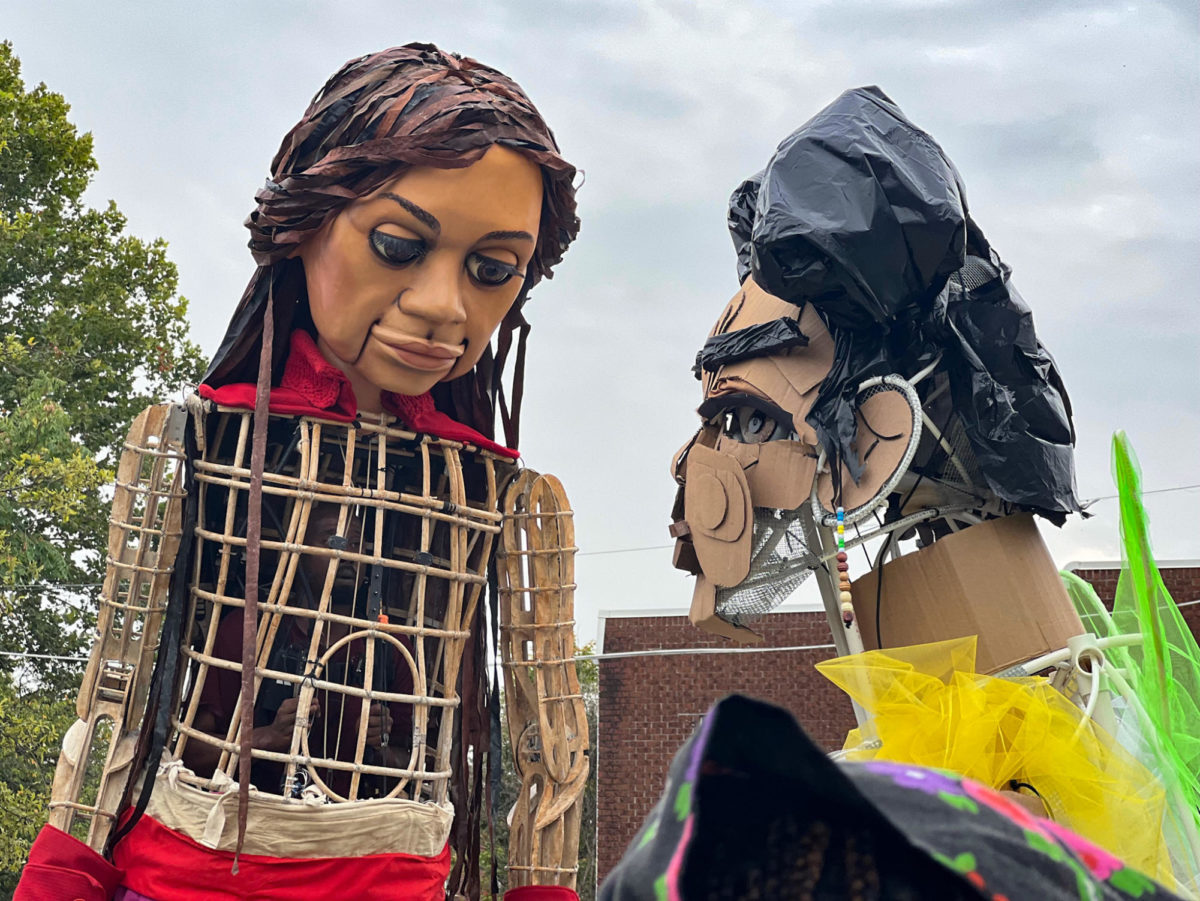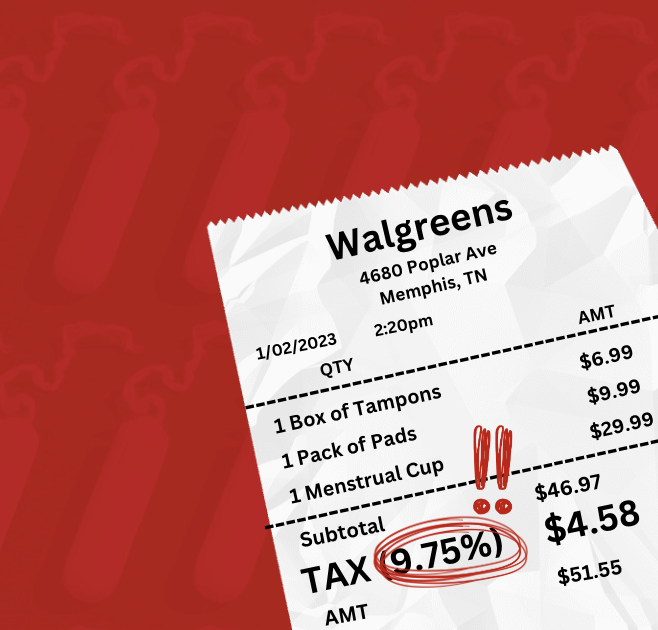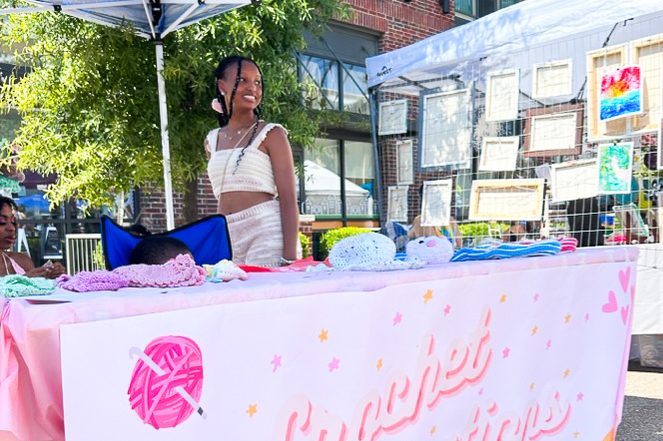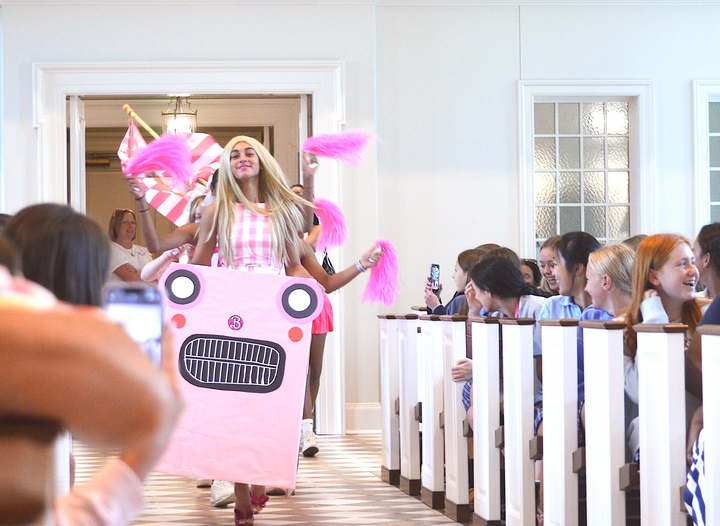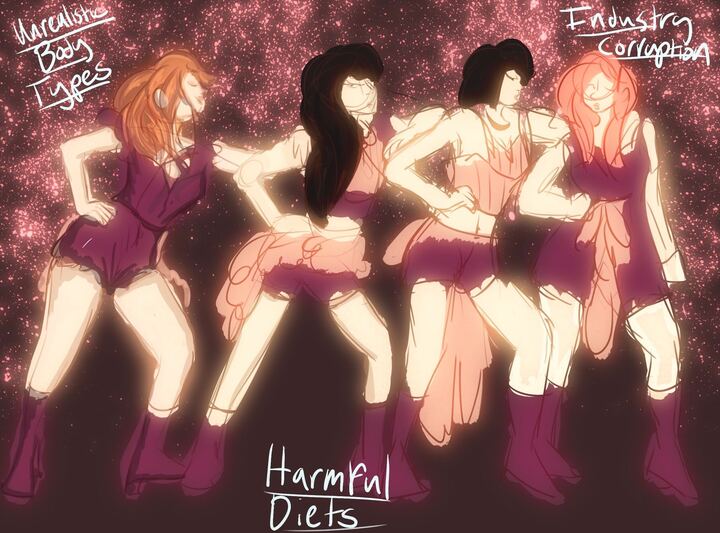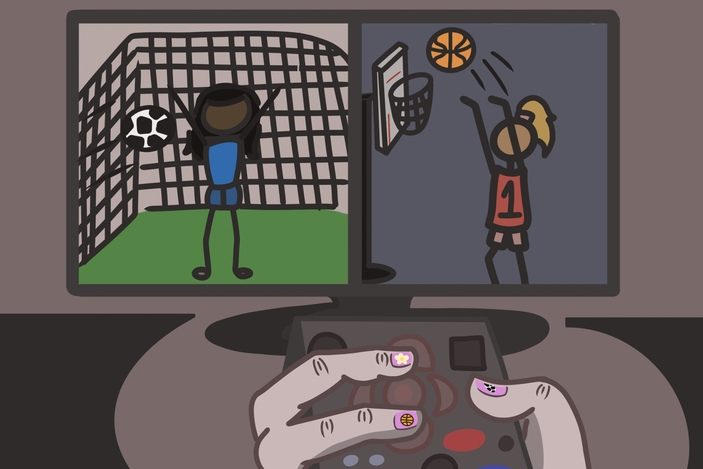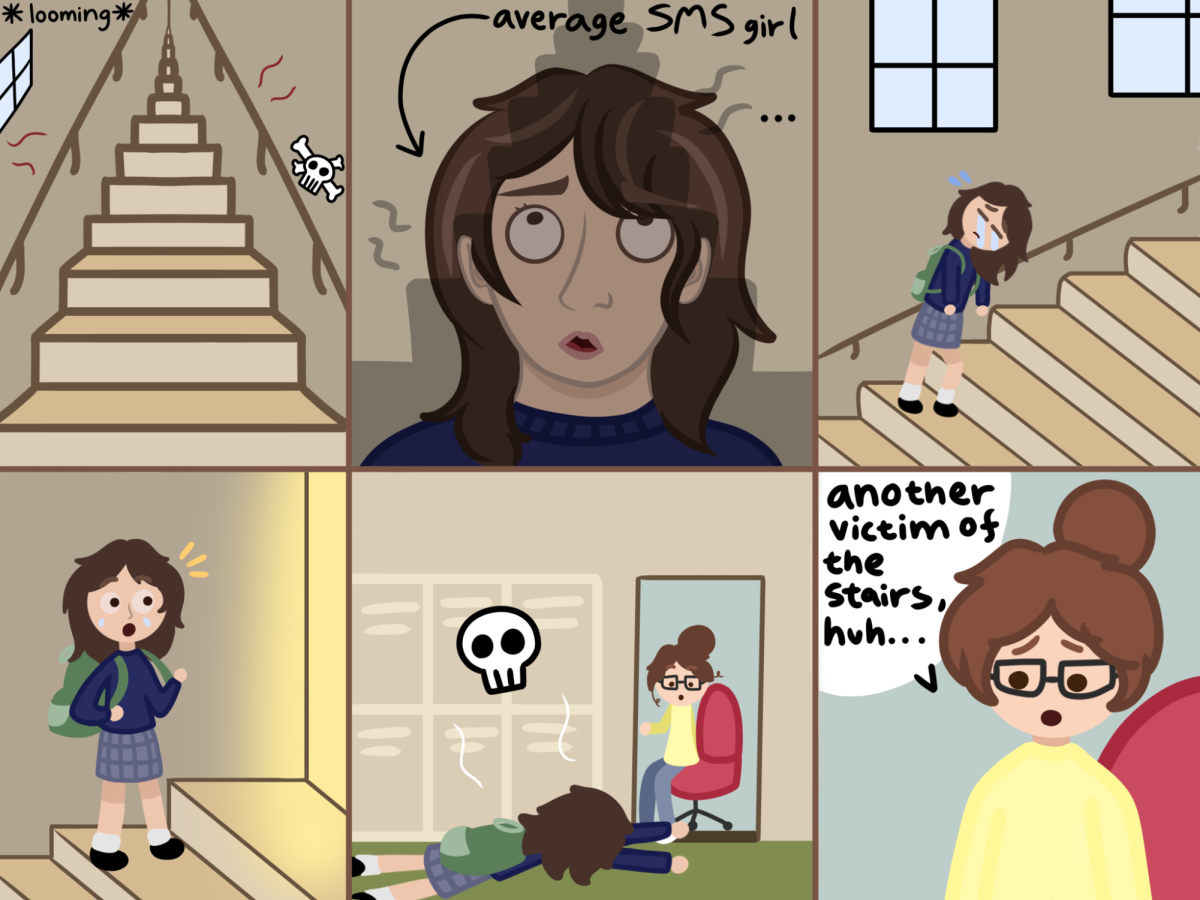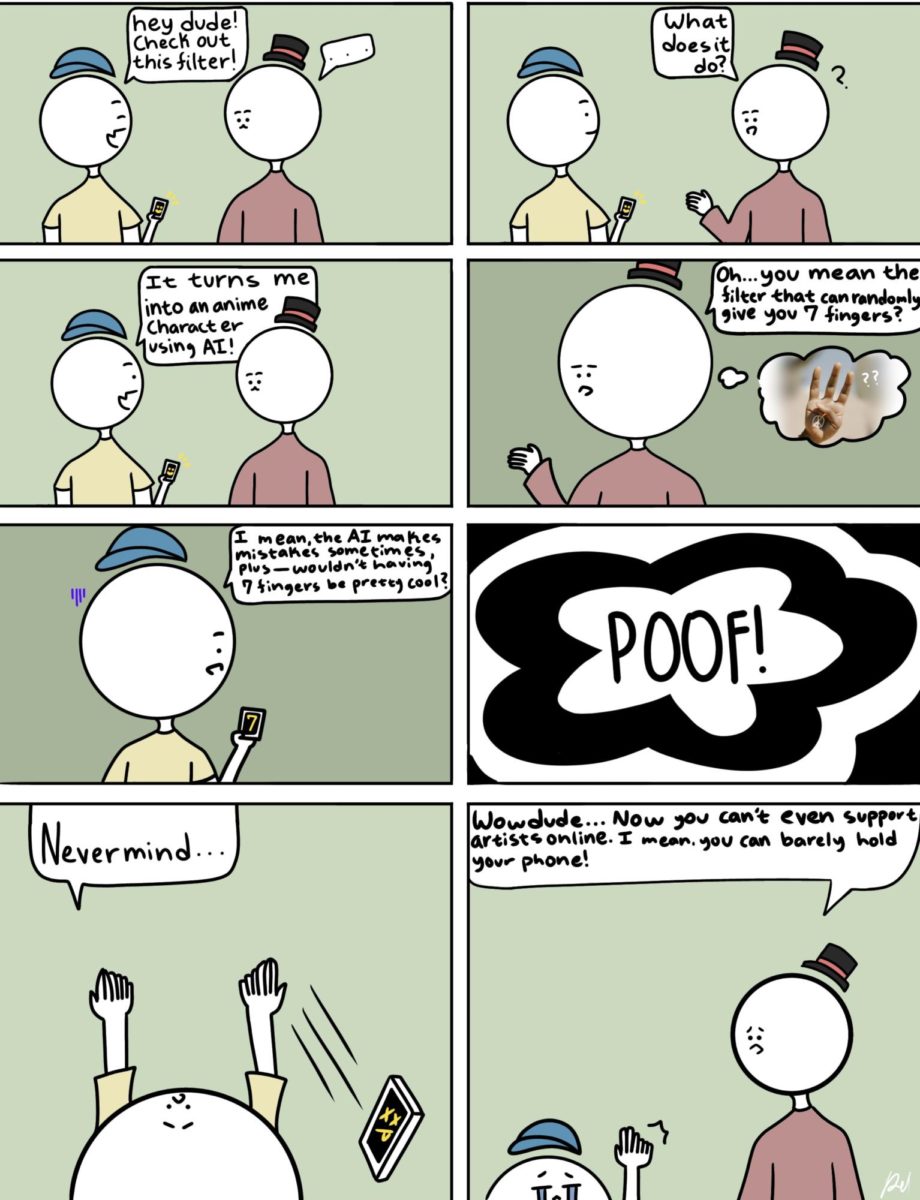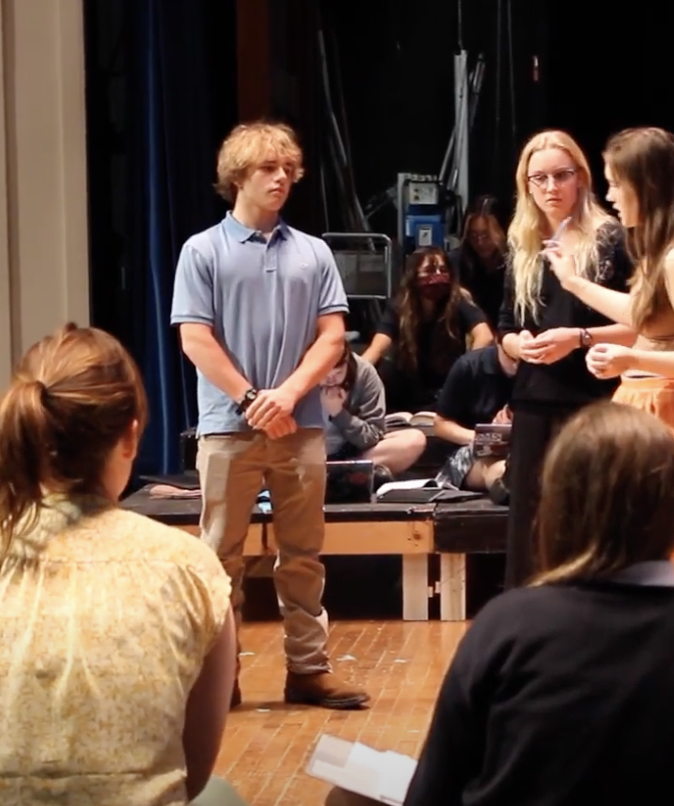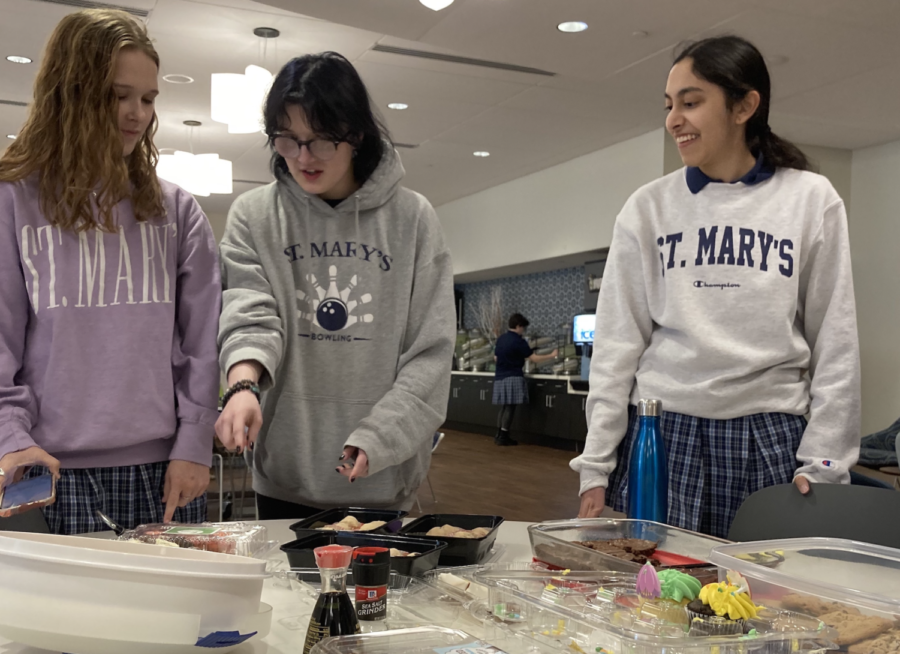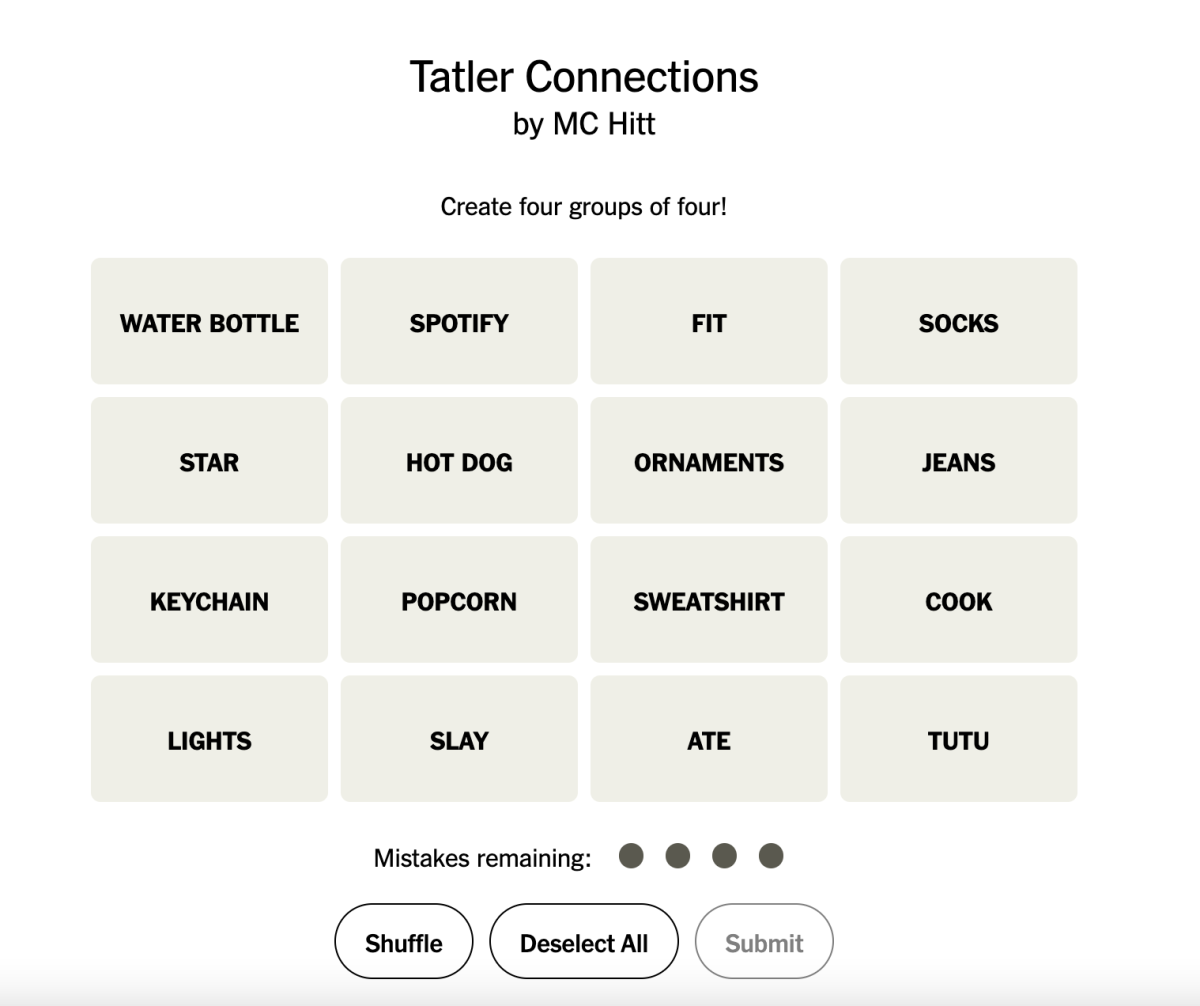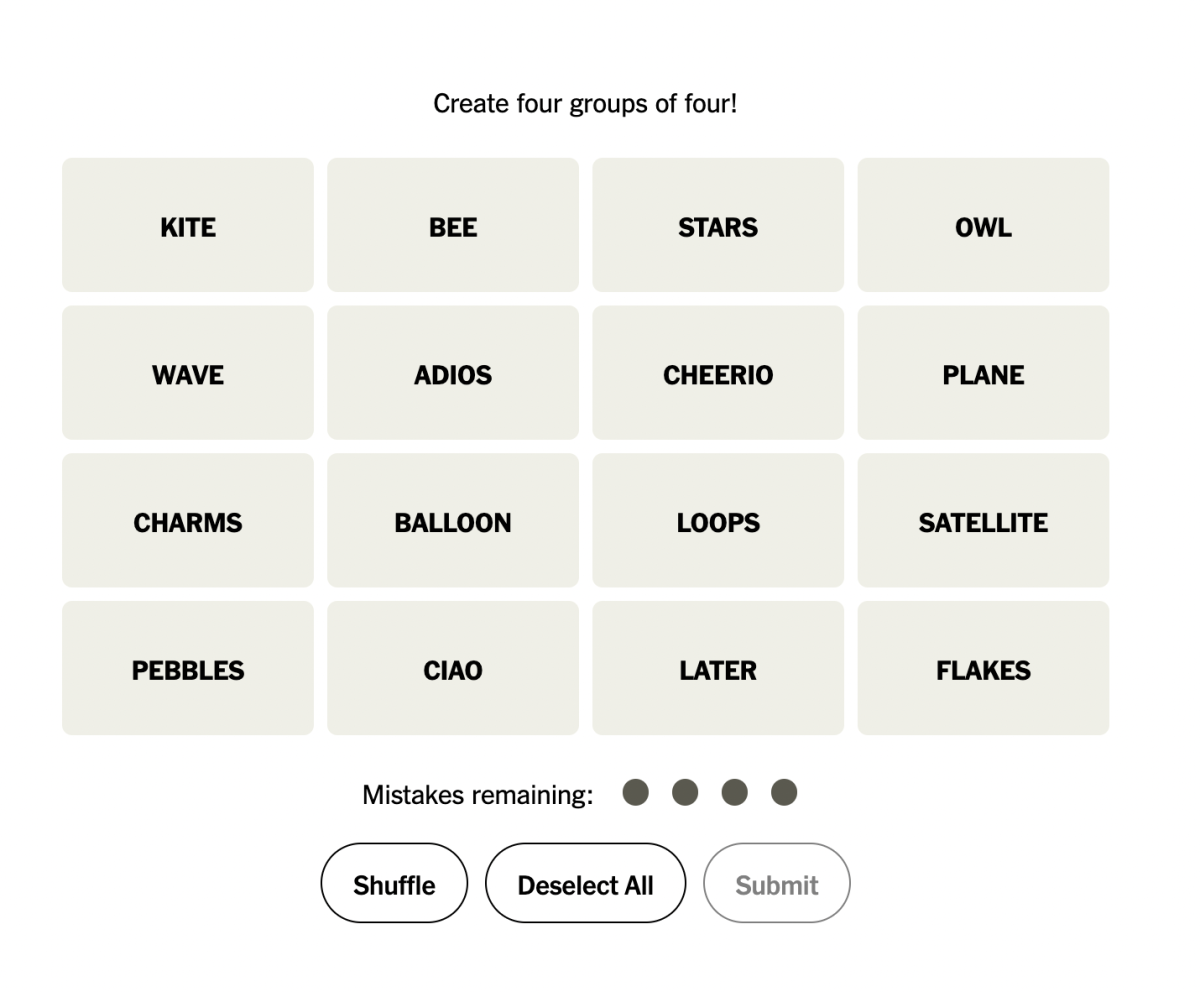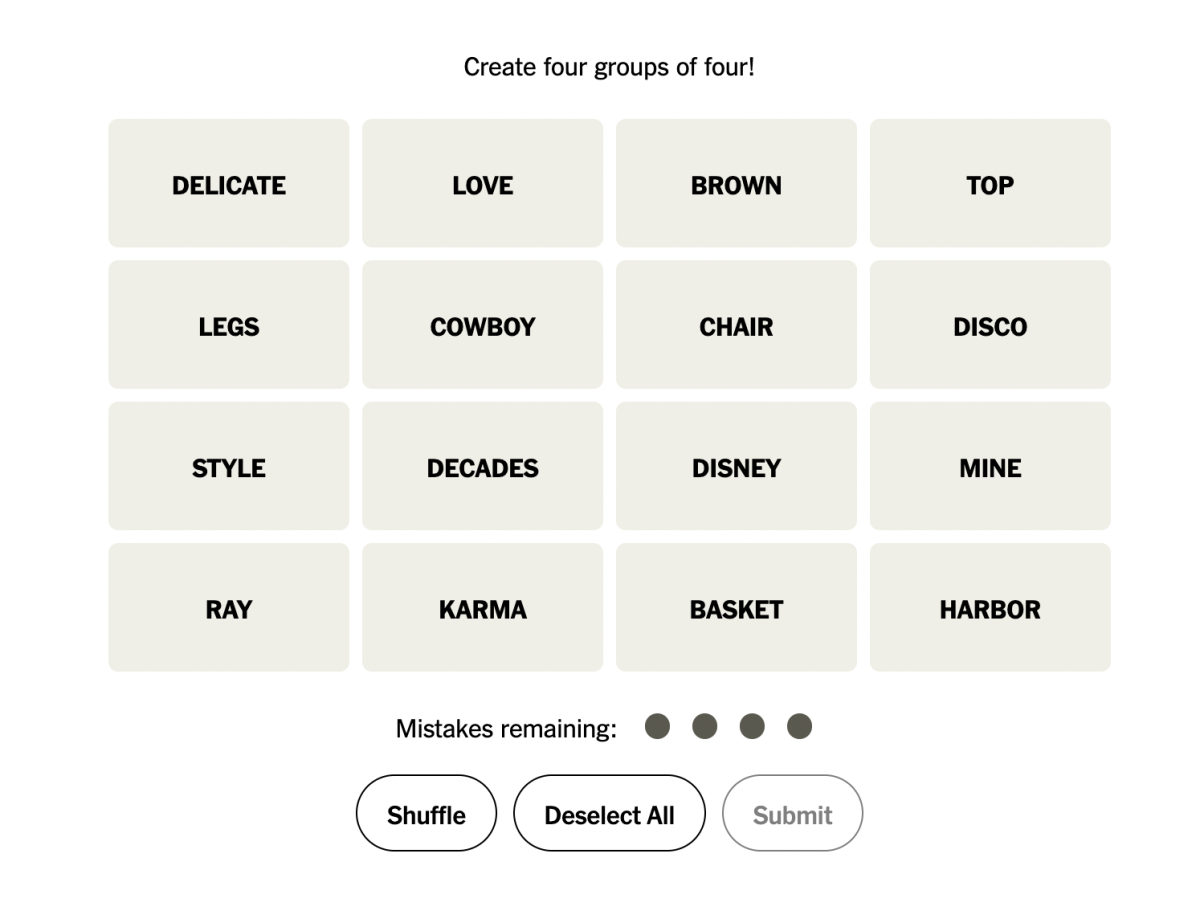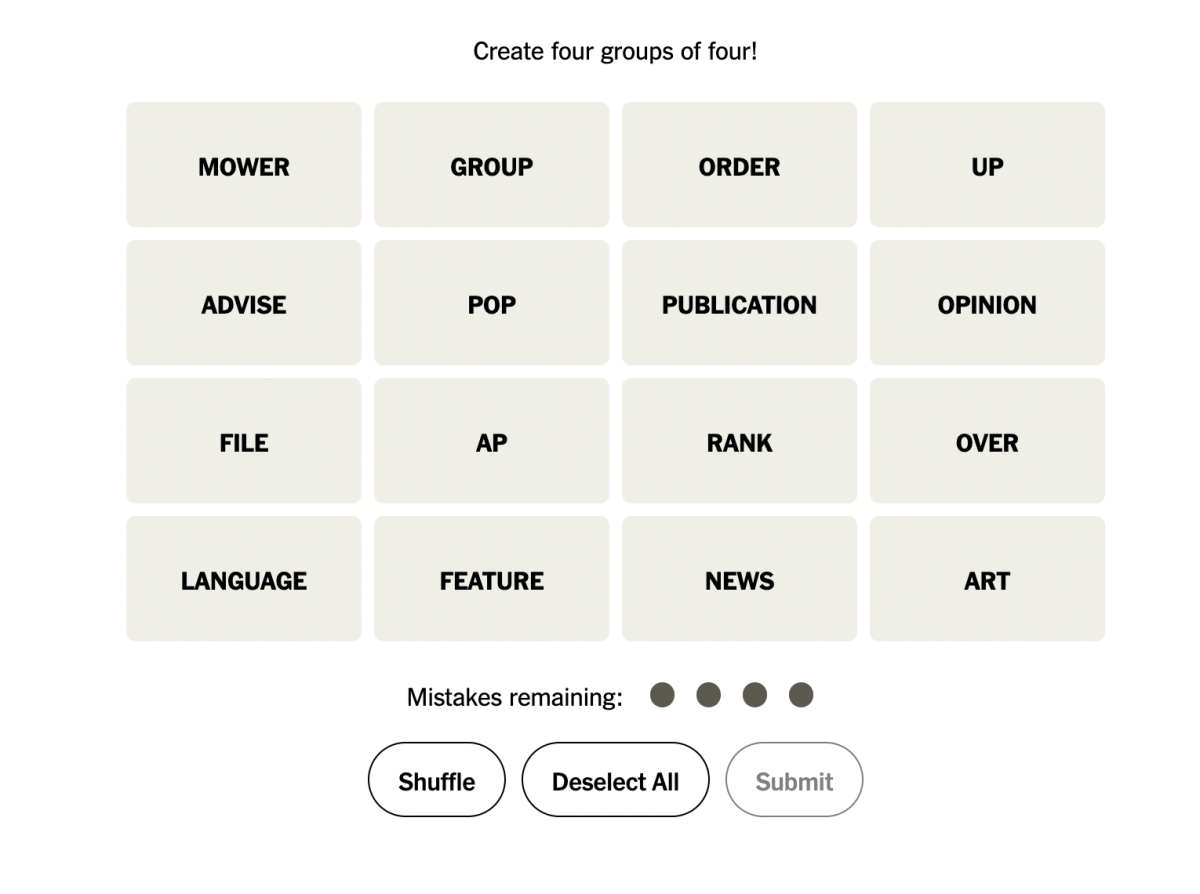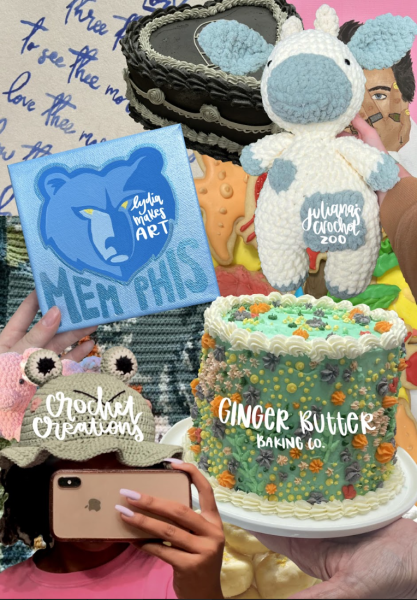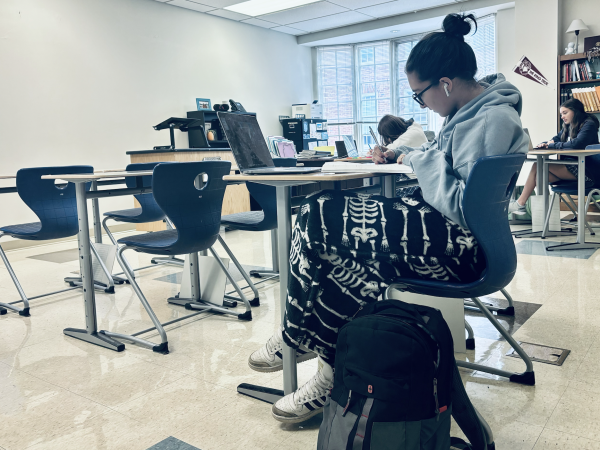Out with Styrofoam!
Styrofoam plates are temporarily replaced with eco-friendly choices by Environmental Club
Students gather in the dining hall along with Environmental Club President Naisha Guar (right) for a bake sale fundraiser. Gaur organized this event to raise money to have compostable plates at lunch for two weeks.
April 13, 2023
According to Ms. Courtney Gillespie, the Environmental Club sponsor, the Upper School dining hall uses 700 styrofoam plates a day, or 126,000 plates in a school year. Styrofoam is non-biodegradable and non-recyclable, and therefore, takes 500 years to completely decompose.
This year, Earth Day is April 22, and the Environmental Club wants to help the students of St. Mary’s live more sustainably by replacing the styrofoam plates with a more environmentally friendly option, sugar cane. For the two weeks before Earth Day, compostable plates are available in the dining hall.
Environmental Club’s president Naisha Guar (12) said she was glad to do something concrete.
“Environmental Club’s main focus is sustainability, and leading into the future and this year especially I wanted to do tangible things within the school,” she said.
For Guar, replacing compostable plates felt the most urgent.
“The utensils are compostable, even though they don’t look like it, ” Guar said, “and even if they were not, plastic is very bad, but styrofoam is much worse than your standard plastic because of the little particulates that break down and last thousands of years and so that’s why we focus on that.”
The Environmental Club, along with some students and faculty, have expressed their frustrations with the daily use of styrofoam plates, and they want compostable plates year round.
“We know that the styrofoam plates are a big issue in the cafeteria,” Guar said, “but we looked at the data and a whole year of plates is too expensive right now for us to do. So we’re trying to do a short period of time because that’s a manageable goal for us.”
The Environmental Club raised money for the effort with flower sales, bake sales and club dues and funds.
Hayden Hedges (12), a member of the Environmental Club, is excited.
“I think it’s really hopeful that they’ve gotten so much of the student body involved in something that we’re all aware of,” she said. “For so long, no one felt like they could really do anything. So I think it’s really nice to see just how excited everyone is in this effort.”
The Environmental Club has hopes that they will be able to carry this effort forward.
“I think building off of this for next year to maybe do this a couple times throughout the year, not just around Earth day would be good,” Gillespie said. “And make it an annual thing for a couple weeks here and there and hopefully move towards fully compostable in the future for when we can afford it.”









